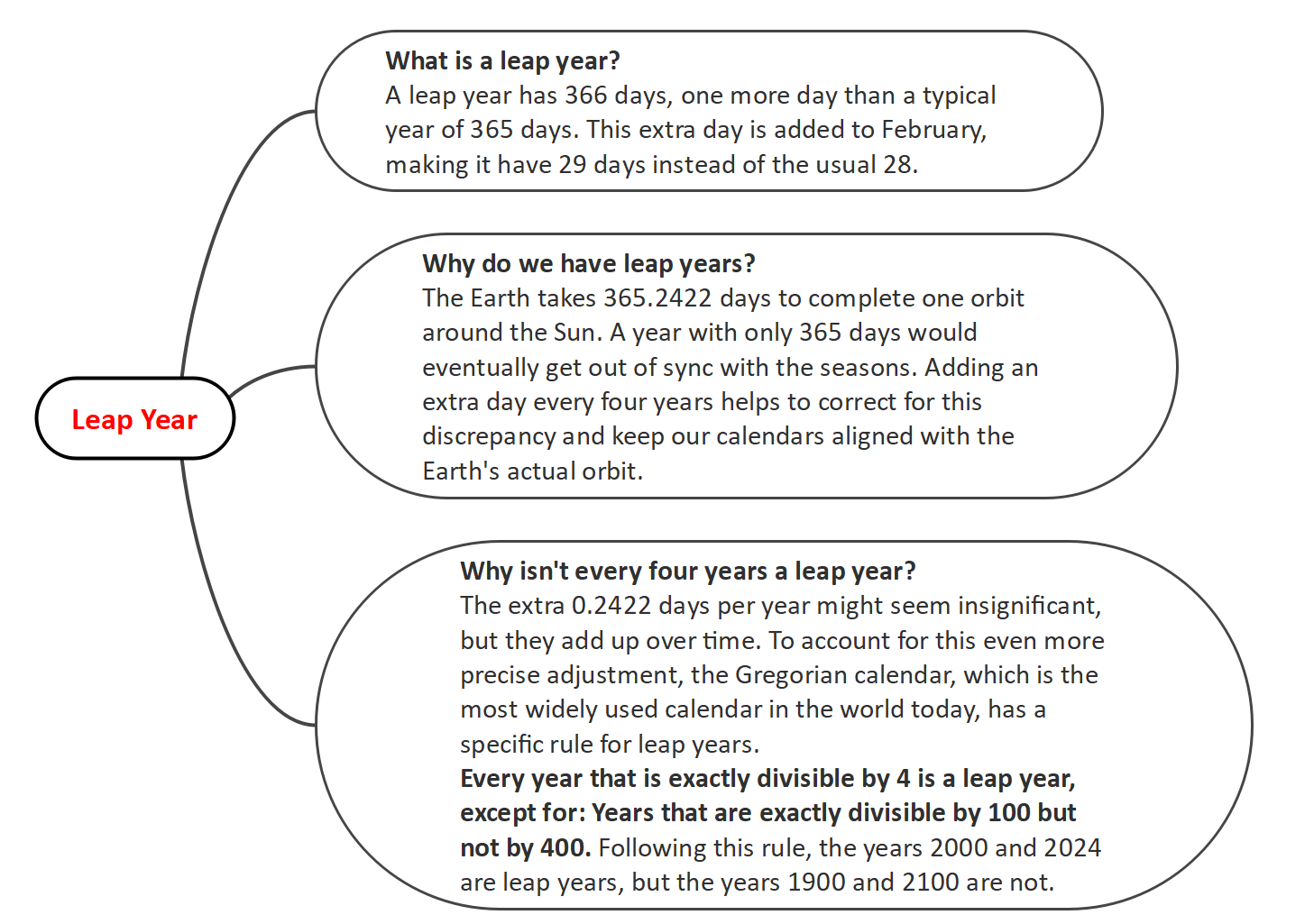Free Courses Sale ends Soon, Get It Now


Free Courses Sale ends Soon, Get It Now



Copyright infringement not intended
Picture Courtesy: www.littlepassports.com
Context: 2024 is a leap year, which means that it has one extra day in February. This is because the Earth's orbit around the Sun is not exactly 365 days, but slightly longer. To keep the calendar in sync with the seasons, we add a leap day every four years, except in some cases when we skip it. The leap year helps us maintain accuracy in our timekeeping and astronomical observations.
Leap Year
Origin and History
Gregorian Calendar Adjustments
Duration of Leap Year Cycle

|
PRACTICE QUESTION Q. Why do we have leap years? A) To align the calendar with lunar cycles B) To account for the Earth's slightly longer orbit around the Sun C) To celebrate historical events D) To adjust for seasonal changes Answer: B Explanation: Leap years are introduced to account for the fact that Earth's orbit around the Sun takes approximately 365.25 days, so an extra day (February 29th) is added every four years to keep our calendar in sync with the solar cycle. |
© 2024 iasgyan. All right reserved